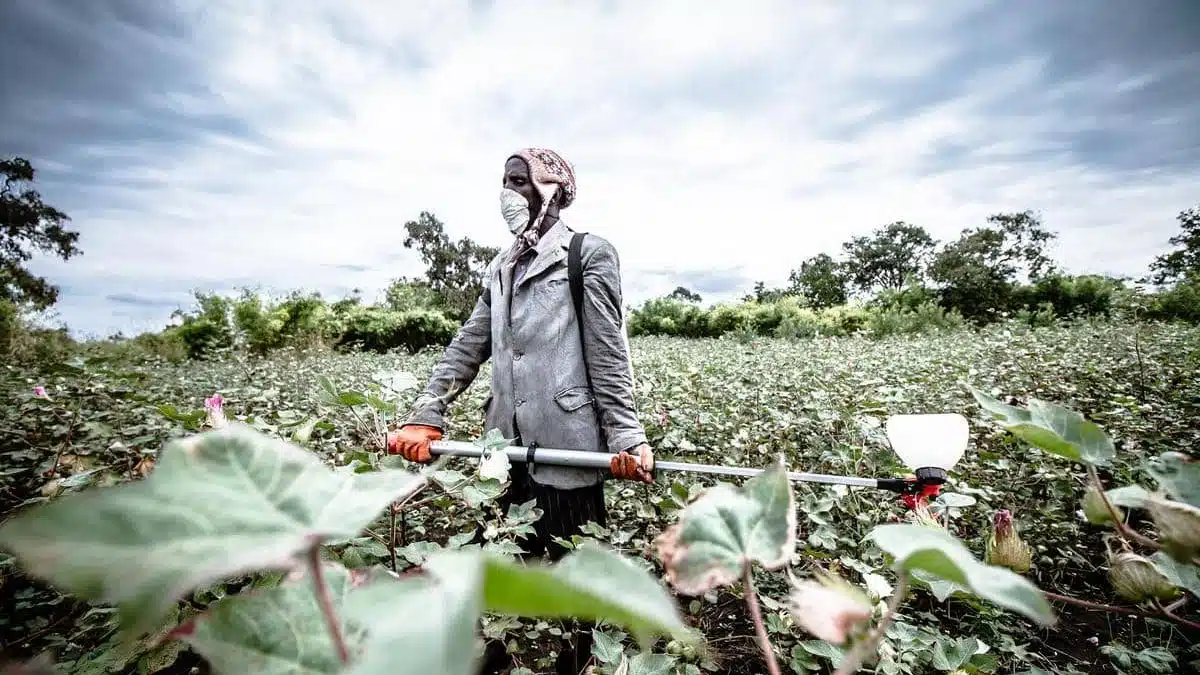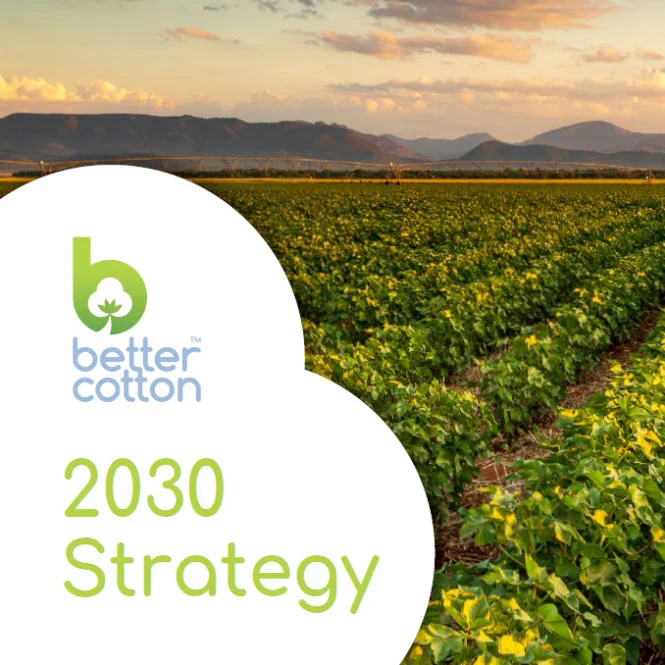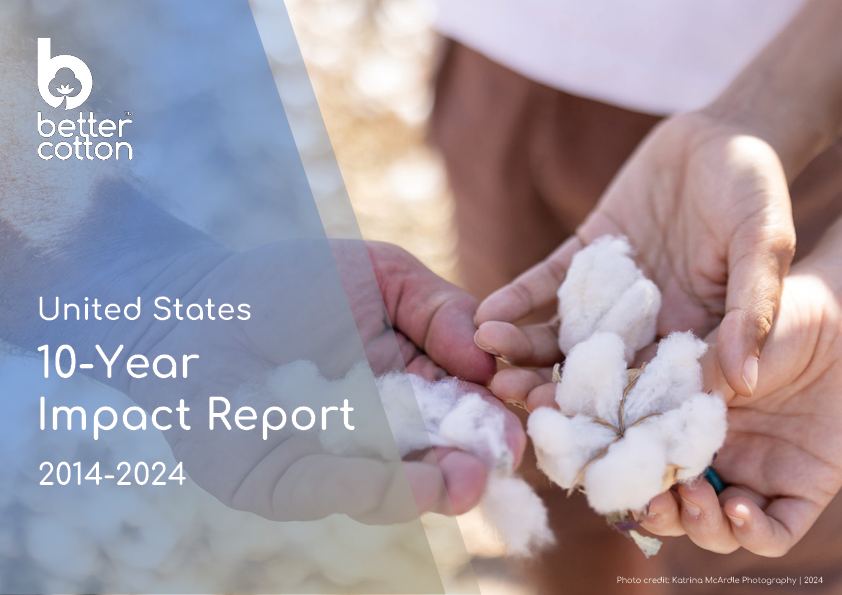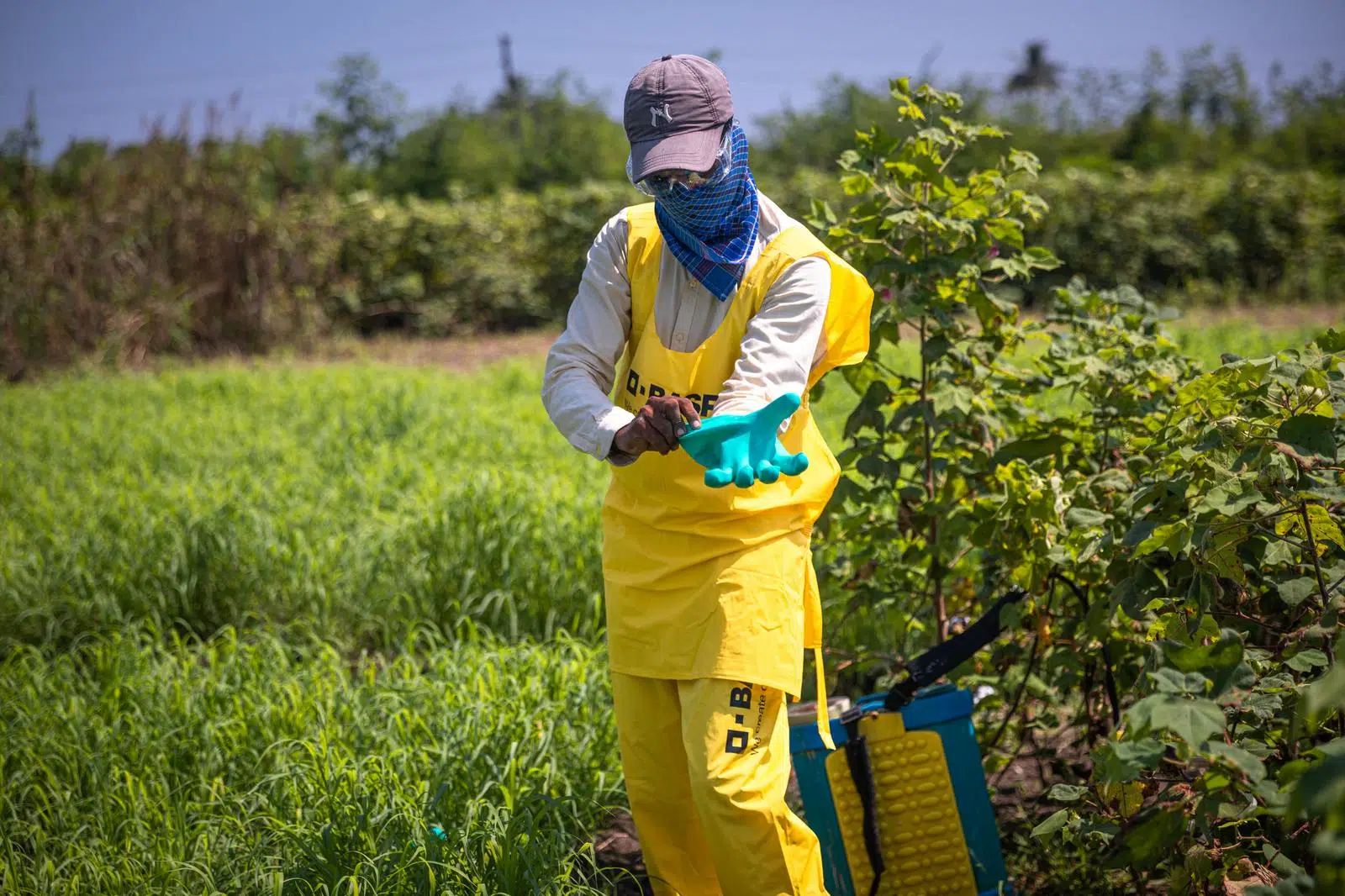- Who we are
- What we do
In just over 10 years we have become the world’s largest cotton sustainability programme. Our mission: to help cotton communities survive and thrive, while protecting and restoring the environment.
- Where we grow
Better Cotton is grown in 22 countries around the world and accounts for 22% of global cotton production. In the 2022-23 cotton season, 2.13 million licensed Better Cotton Farmers grew 5.47 million tonnes of Better Cotton.
- Our impact
- Membership
Today Better Cotton has more than 2,700 members, reflecting the breadth and diversity of the industry. Members of a global community that understands the mutual benefits of sustainable cotton farming. The moment you join, you become part of this too.
- Associate Membership
- Civil Society Membership
- Producer Organisation Membership
- Retailer and Brand Membership
- Supplier and Manufacturer Membership
- Find Members
- Member Monitoring
- Better Cotton Platform
- myBetterCotton
- Resources – Better Cotton Conference 2022
- Complaints
- Whistleblowing
- Safeguarding
- Get Involved in the Better Cotton Programme
- Thank you for contacting us
- Better Cotton’s Data Privacy Policy
- Log in
- Members’ Area
- Request for Proposals
- Better Cotton Cookie Policy
- Web Reference
- Measuring Cotton Consumption
- How to Implement the Chain of Custody Standard
- Resources – Better Cotton Conference 2023
- Certification Bodies Old
- Latest
- Sourcing
- Latest
The founding premise of Better Cotton is that a healthy sustainable future for cotton and the people that farm it is in the interests of everyone connected with it.
Let us help you find what you’re looking for
Results for {phrase} ({results_count} of {results_count_total})Displaying {results_count} results of {results_count_total}
Minimising the impact of crop protection practices is central to producing Better Cotton. It’s a key part of the Better Cotton Principles and Criteria (P&C) and represents a significant focus of our partners’ farmer capacity building programmes. Pesticides should be used as a last resort once all other methods have been exhausted. However, a certain level of pesticide use is sometimes necessary, and some are worse than others. The best and most realistic course of action is reducing their use, eliminating the use of harmful synthetic pesticides and enabling farmers to gain access to sustainable alternatives.
That’s why we’re taking our efforts to help Better Cotton Farmers reduce chemical pesticide use to the next level, as we strive towards a new pesticide reduction target for 2030. The upcoming target builds on our existing integrated pest management (IPM) approach, together with extensive research and collaboration with partners, and will be strengthened by revisions to our P&C pesticide requirements. It’s one of the four remaining 2030 Better Cotton targets to be announced (a climate change mitigation target was launched with the 2030 Strategy in December 2021).
Cotton growing can involve high levels of pesticide application, including the use of highly hazardous synthetic pesticides in some countries, with potential toxic impacts for humans, wildlife and the environment. We require Better Cotton farmers to use only nationally registered products for cotton, and have banned products classified as highly hazardous synthetic pesticides and acute toxic substances. We promote the use of appropriate personal protective equipment (PPE) and the correct handling and application of pesticides. However, we know that smallholder farmers can be particularly at risk due to limited availability of PPE and a lack of access to the skills, knowledge and alternative inputs they need to change their practices.
IPM is a guiding approach that is based on an integrated pest control strategy, without relying on any single technique, particularly application of pesticides. It includes:
- Selecting the best locally adapted cotton seed varieties, which are more resistant or tolerant to local pests and diseases
- Preserving and enhancing the presence of beneficial organisms that are natural predators of the pest species
- Using trap crops around the border of cotton fields to attract pests away from the cotton
- Rotating cotton with other crops to reduce pest and disease build-up for the following season.
- Encouraging the use of biological pesticide alternatives
Under IPM, pesticides are only applied as a last resort when a clearly defined pest threshold has been reached.
Preparing the ground for a pesticides target

To create the new target, we have been analysing our field-level data, so we can move beyond understanding volumes of pesticides used to gain a more in-depth insight into the toxicity of active ingredients and their concentration in products used by Better Cotton Farmers. This is far from straightforward. There are challenges in conducting detailed studies and collecting significant data to define an accurate baseline (the current situation) for farmers, particularly in relation to smallholders. We need to make sure we have identified exactly which active ingredients are in each pesticide product used and in what volume they are used in, in every production country. Any recommendations we make must help smallholders to improve their yields and income. This is a delicate balance to maintain.
Working closely with our country teams, we have further reviewed and prioritised the highly hazardous pesticides (HHPs) for elimination in each production country, setting in motion specific action plans. We have also collaborated with other cotton standards and organisations including the IPM Coalition to understand their perspective, best practices and progress on this topic.
To overcome the restricted choice of pesticides in some areas, we will need to deploy a systemic approach that takes into account the need to transform pesticide markets. This could include working with input providers to help explore more sustainable alternatives, and engaging in more advocacy work to encourage policymakers and regulators to define appropriate legal frameworks that catalyse change.
So what will our new target look like?
We’re keeping an open mind and exploring a broad range of approaches. Ultimately, we’ll define the target with the greatest chance of making a positive impact. We want to make sure it’s sufficiently ambitious and yet achievable for farmers, with a focus on the adoption of progressive IPM practices and the reduction and elimination of highly synthetic pesticides. Any requirements on toxicity will be clearly communicated in good time to farmers and other stakeholders.
To achieve this, we’re conducting further studies in India, Pakistan and Brazil, exploring an evaluation tool that will help measure farmers’ progress towards good IPM, and drawing on the work by our member and partner PAN UK to build a thorough understanding of pesticide poisoning risks.
Revised Principles and Criteria – a foundation for change

Our revised Principles and Criteria will provide a robust foundation for efforts and activities to achieve this target. We began the process of revising the P&C in October 2021, with a public consultation in 2022 and the new draft set to be launched in the first half of 2023, followed by transition year, with full use from the 2024-25 season.
The revision of the Crop Protection Principle reinforces our existing requirements, while continuing to promote the value of continuous improvement. It includes a series of practice-related IPM requirements, including the elimination or phasing out of highly hazardous synthetic pesticides, and requirements on preventive measures for handling and application. We will also further strengthen the links with other Principles that relate to pesticides (preventing their use and reducing their impact).
For example, within our work on natural resources, we will promote practices to improve soil health, protect water courses, and preserve biodiversity and natural habitats all of which will reduced the need for pesticide use. Within our focus on occupational health and safety, we will emphasise the need for appropriate PPE when protecting crops. And of course, we will provide clear, localised guidance for producers.
We’ll share more information on the upcoming Better Cotton target and indicator in due course. For more information on the revision of our P&C, please visit this page.



